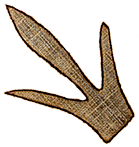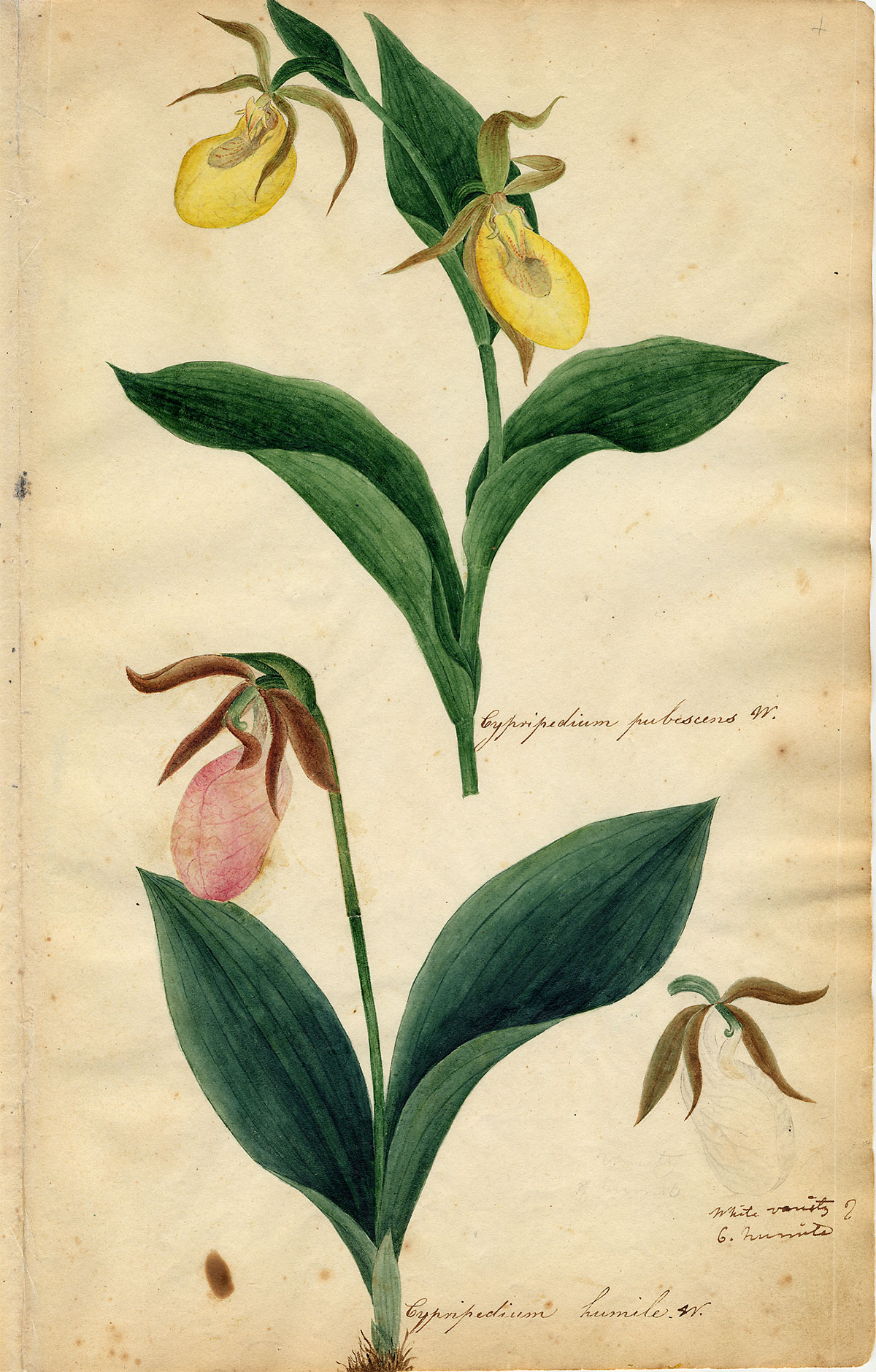 MENU
MENU
 MENU
MENU

Lady Slippers illustration by Orra White Image courtesy of Deerfield Academy Archives.
Orra and Edward were apart for much of 1818-1820, as Orra left the academy in 1818 to return to Amherst, but the sweethearts wrote and visited when they could. Being apart was not easy: A letter from his sister told Edward, studying in New Haven at the time, that "Miss O. White is most melancholy."
When they were together, Orra and Edward had a new scientific project, creating an herbarium. They gathered flowers and ferns and pressed the fresh plants between paper pages, flattened them with weights, and left them to dry. Orra made paintings or drawings of 150 of the 800 specimens collected, while Edward wrote the Latin and common names directly onto the pages. The delicate dried plants did not last, but Orra’s line drawings and watercolors endure even today.
Making their herbarium was not just for amusement, but a useful activity. Doctors who made their own medicines relied on illustrated herbal books for making plant identifications, thus forming a market for accurate botanical drawings. One of the rare instances in which Orra prepared drawings for someone other than Edward was for Dr. Jacob Bigelow, whose American Medical Botany was published between 1817-1821. It appears from the few letters available that Bigelow did not deal directly with Orra, but engaged her services through Edward. Perhaps they thought it unseemly for a woman to sell her own work, especially when it involved correspondence with a man she did not know personally, although Bigelow had a respectable reputation as a physician and Harvard College professor.
Edward and Orra sent the herbarium to their contemporary John Torrey, who was making a name for himself internationally for his botanical expertise, to ensure that they had not made any mistakes in their identifications. The American continent astonished Europeans with its unfamiliar species and varieties of plants and animals, and their scholars had been busy studying and classifying whatever American field botanists could send them. By this time, though, American botanists such as Torrey were becoming more confident in their own abilities, and a home-grown American scholarship was emerging.